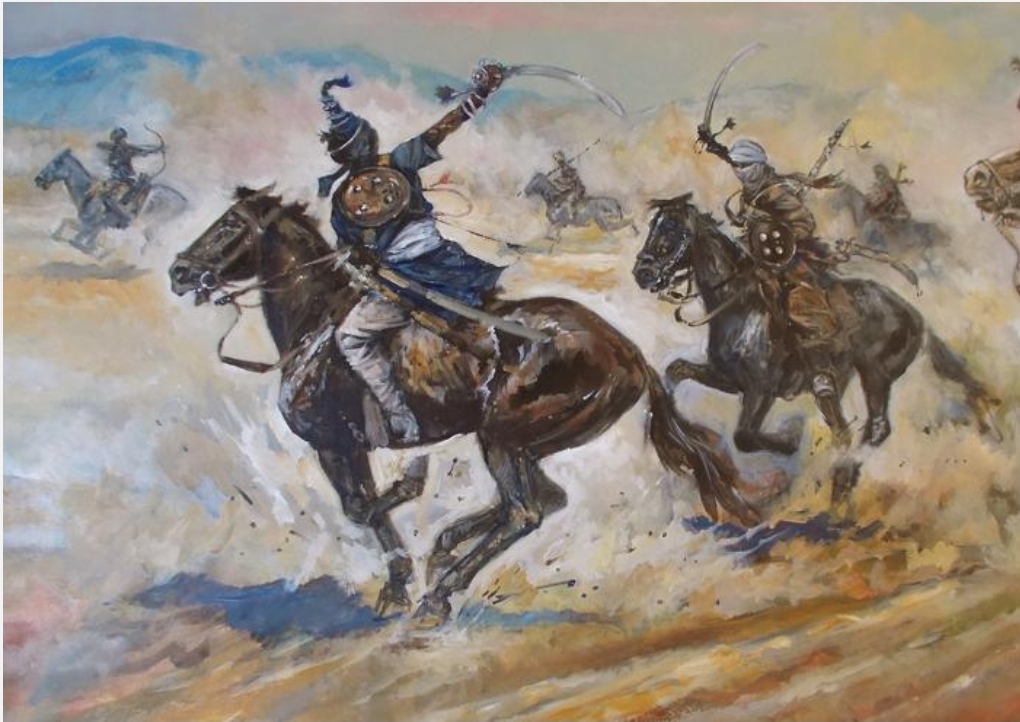In 1774 a serious quarrel arose between Ranjit Dev of- Jammu and his eldest son Brij Raj Dev. The heir-apparent was of dissolute character and the father, a man of great ability and sound judgment, wanted therefore his younger “Dalel Singh to -succeed him.A quarrel arose over this issue which soon developed to fighting.The raw youth not realizing the consequences sought assistance from Charat Singh – Sukarchakia and Jai Singh Kanhiya,”both of whom readily assented. The father could not fight with this formidäble coalition single-handed, and invited his over-lord Jhanda Singh Bhangi to help him.The united forces of the Sukerchakia and Kanhiya chiefs marched into the hills, and encamped on the banks of the Basantar river a little east of Jammu. Ranjit Dev collected an army of his own as well as of his feudatories such as Chamba, Nurpur, and Basohli in addition to the forces of Jhanda Singh. Skirmishes continued for sometime till one day Chart Singh was killed by the bursting of his own gun which struck him in the forehead.The loss of Charat Singh was too great for the allies who found it difficult to maintain their position against the powerful Bhangi Chief. Besides, Jai Singh realized that Charat Singh’s son Mahan Singh was too young to be a match for Jhanda Singh who was a deadly enemy of the Sukerchakia Misl. Jai Singh therefore decided that their safety lay in the death of the Bhangi Sardar. In consequence he bribed a Rangretta Sikh in the service of Jhanda Singh, whom he shot dead from behind while that Sardar was walking in his camp unattended. Ganda Singh the brother of the deceased succeeded to the leadership of the Bhangi Mish. He did not like to continue the fight and retired from Jammu, Jai Singh also returned home with a view to organize the Sukerchakia Misl. Before leaving Jammu, Mahan Singh, though young in years, resorted to a diplomatic trick. He changed turbans with Brij Raj Dev in token of affection which bound them in brotherhood for life, but this privilege he was going to abuse in the fullest measure.’
References :-
- History Of the sikhs vol 3 by- Hari Ram Gupta
- Jarra Singh Binod, 200; Gyan Singh, ‘954-5; Latif, 339-40
- The Punjab Chiefs, 316-7 ; Raj Khalsa, ill, 5.


